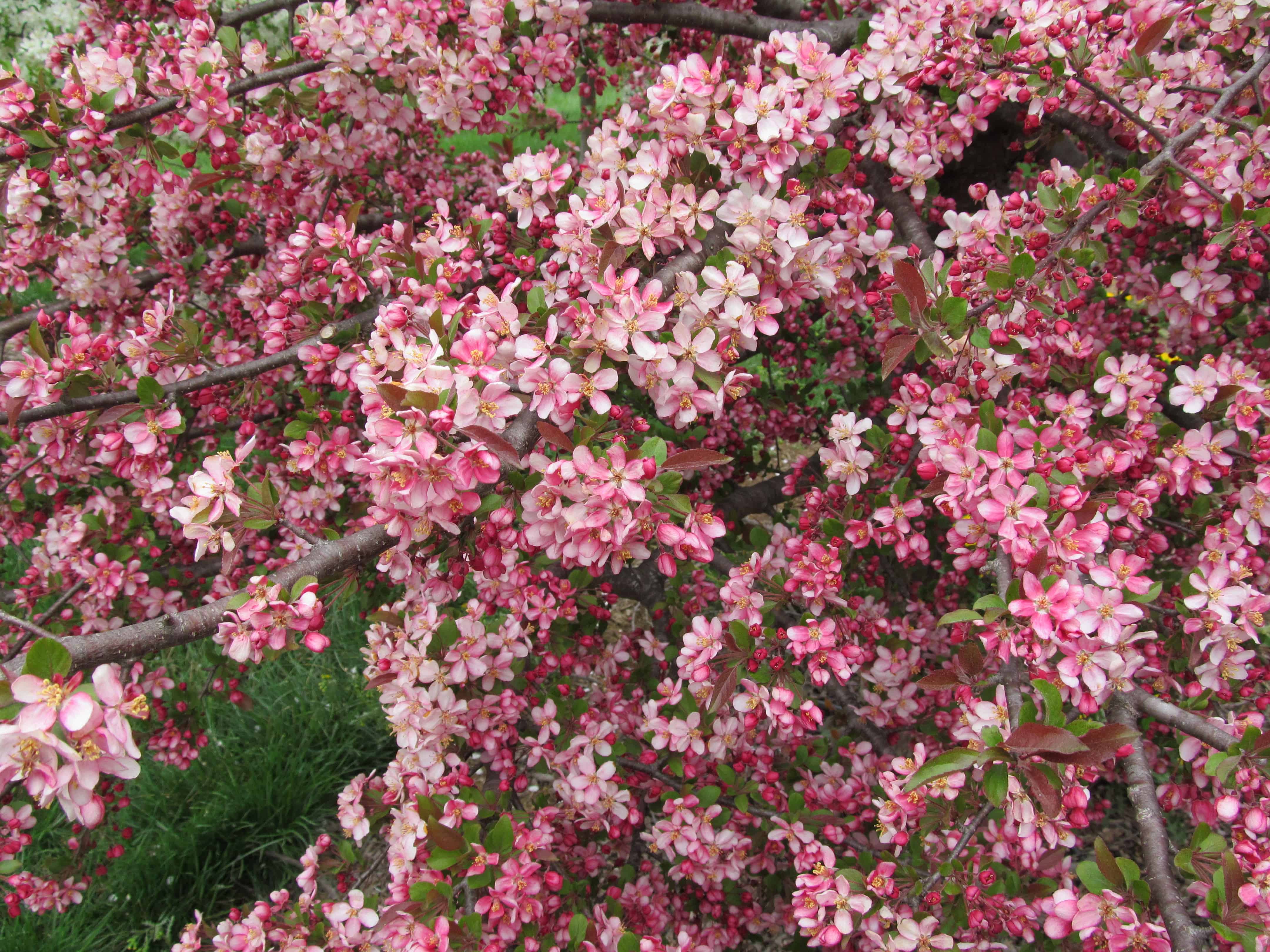Flowering Crabapples – Malus species
Honey bees came over with the colonists in order to pollinate the apple trees that were being planted. Crabapple is in the same genus as eating apples, making them irresistible to honey bees. Modern Crabapple trees are breathtakingly beautiful and have been bred for better performance and disease tolerance. When blooming, they are literally teeming with insect visitors – not just honey bees, but also bumble, digger, and sweat bees. In the book Garden Plants for Honey Bees, Peter Lindtner rates Crabapples as 3 star nectar and pollen sources for honey bees.
In his book Manual of Woody Landscape Plants, Michael Dirr points out that crabapples are well suited for the home landscape, commercial and public buildings, and highway plantings. They’re quite adaptable to varying soil conditions, but do best in heavy loam – something we hear in MoCo are very familiar with! Regardless of type, the soil should be well-drained, moist, and slightly acid (pH of 5.0 – 6.5). Trees should be sited in full sun for best development of flowers and fruits. Dirr points out that there are 100-200 types of crabapples grown in North American nurseries, with at least 300-400 additional types in arboretums and botanical gardens.
Below is just a sampling of the many great selections available.
Zumi Crabapple – Malus x zumi ‘Calocarpa’
- Deep pink buds open to white blooms in late April/early May.
- 20-25’ tall with a rounded shape.
- Resistant to rust, scab, and powdery mildew.
Prairifire Crabapple – Malus ‘Prairifire’
- Buds red, opening to deep pink flowers in late April/early May.
- 15-20’ tall, upright when young, later rounded.
- Reddish-maroon leaves, with orange to red fall color.
- Fireblight, scab, powdery mildew, and rust resistant.
Pink Princess Crabapple – Malus ‘Parrsi’
- Rose pink flowers in late April/early May.
- Natural dwarf, 8-12’ tall, low spreading shape.
- New leaves reddish-purple, maturing to reddish-green.
- Excellent disease resistance.

